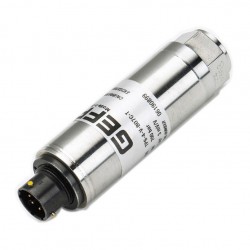 This guide will help you select a millivolt output pressure transducer and explain the advantages of using this type of pressure sensor in certain applications.
This guide will help you select a millivolt output pressure transducer and explain the advantages of using this type of pressure sensor in certain applications.
The majority of millivolt output pressure transducers have passive electronic signal conditioning meaning that they are no amplifiers, filters, transistors or any other active component that might affect the natural performance of the transducer sensing element. Millivolt output pressure transducers offer the highest frequency response and the lowest power consumption of all the different types of strain gauge based pressure transducers available.
Products
Choose a millivolt output pressure transducer from the list below to view product specification details and request a price quotation.
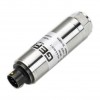 TPS Strain Gauge Pressure Sensor
TPS Strain Gauge Pressure Sensor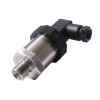 IMP Low Cost Pressure Sensor
IMP Low Cost Pressure Sensor Chemical Resistant Pressure Sensor Elements for Electronic Devices & Embedded Product Design & Development
Chemical Resistant Pressure Sensor Elements for Electronic Devices & Embedded Product Design & Development SSPT Subsea Wet-Mateable Electrical Connector Pressure Sensor
SSPT Subsea Wet-Mateable Electrical Connector Pressure Sensor IMP Ceramic Strain Gauge Pressure Transducer
IMP Ceramic Strain Gauge Pressure Transducer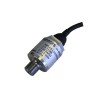 AS Autosport Pressure Transducer
AS Autosport Pressure Transducer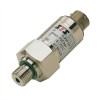 TM Silicon Strain Gauge Pressure Transducer
TM Silicon Strain Gauge Pressure Transducer TPF Flush Diaphragm Strain Gauge Pressure Sensor
TPF Flush Diaphragm Strain Gauge Pressure Sensor TPH Strain Gauge Ultra High Pressure Sensor
TPH Strain Gauge Ultra High Pressure Sensor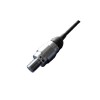 ASM 13mm Diameter Miniature Pressure Transducer
ASM 13mm Diameter Miniature Pressure Transducer
Description
The mV output is the least conditioned out of pressure transducer outputs, and is ideal for low power consumption and high dynamic response applications.
If you have an unlimited power supply you will be free to select any output signal without having to be concerned about power consumption. However if it is a battery powered application where measurements are to be made over a long period of time, power consumption of the output signal is going to be a significant deciding factor.
The millivolt output signal tends to have the lowest power consumption especially those with high input impedance. Also millivolt output pressure transducers have very few active components and therefore there is negligible warm up time allowing the sensor to be pulsed at regular intervals to further reduce power consumption. This makes the millivolt output pressure transducer ideal for incorporating into field instruments such as water level data loggers which have to operate in locations which are remote and often without power.
If you are trying to measure dynamic pressures which are changing very quickly you will need a pressure sensor that has an output signal with a frequency response that is ideally an order of magnitude higher in frequency than the process variable being measured. Although many output amplifiers now have frequency responses in the kHz range this may still not be enough for some applications. Millivolt output pressure transducers provide the highest frequency response for any given pressure sensor technology because there is typically no signal conditioning electronics fitted. Therefore the response of a millivolt output signal is only limited by the natural frequency of the sensing diaphragm and not by any other components.
Millivolt output levels vary depending on the core sensing technology or more specifically the gauge factors of the strain gauges that make up the wheatstone bridge circuit which most mV output pressure transducers use to convert the mechanical movement of the diaphragm into an electrical signal.
Pressure transducer technologies such as bonded foil or thick film strain gauge have relatively low mV outputs typically 20-30 mV at full scale pressure whereas silicon and thin film strain gauges have typically 100 mV output at full scale pressure.
The majority of mV output signals are ratiometric to supply voltage. There will be a limit on the range of supply voltage which can be used so that self heating effects and diminishing signal to noise ratios do not impact on the pressure transducers performance.
Due to the low voltage level of millivolt output signals they are not generally the best solution over long distances and therefore are mainly used on test rigs or inside an instrument where the cable lengths are relatively short between the signal conditioner and the pressure transducer.
Select a millivolt output pressure transducer for your application
Strain gauge bridge output pressure sensors for gauge, absolute and differential pressure sensing with high dynamic response, low power consumption and minimal active electronic components. These sensors have low voltage output signals which are proportional to the input supply voltage and typically have a 20 mV, 30 mV, 33 mV or 100 mV when supplied by 10Vdc.
If you would like us to select a millivolt output pressure transducer for you, then please use this form to specify your requirements.
General Purpose
General purpose mV/V sensitivity pressure transducer for general pneumatic and hydraulic applications which require low level signal outputs. Since there is no amplifier circuitry in these sensors the measured signal response is only restricted by the mechanical natural frequency of the sensing element.
for general pneumatic and hydraulic applications which require low level signal outputs. Since there is no amplifier circuitry in these sensors the measured signal response is only restricted by the mechanical natural frequency of the sensing element.
OEM
OEM pressure transducer with strain gauge bridge output signal for incorporating into OEM instrumentation design for easy adaption into your own custom mechanical configuration and electrical interface.
for incorporating into OEM instrumentation design for easy adaption into your own custom mechanical configuration and electrical interface.
High range pressure
High pressure transducers with millivolt output signal for testing hydraulic pressures. This sensor has a robust diaphragm technology to withstand the harsh pressure changes that occur regularly in dynamic hydraulic test systems.
for testing hydraulic pressures. This sensor has a robust diaphragm technology to withstand the harsh pressure changes that occur regularly in dynamic hydraulic test systems.
Miniature size
Small size 4 wire ratiometric pressure transducer with mV output proportional to input supply voltage. Ideal for research and testing applications where small dimensions, low weight and high frequency response are required.
with mV output proportional to input supply voltage. Ideal for research and testing applications where small dimensions, low weight and high frequency response are required.
Flush diaphragm
Exposed flush face diaphragm pressure sensor with millivolt output signals for measuring the pressures of high viscosity liquids or where the internal volume of the pressure connection needs to be eliminated.
with millivolt output signals for measuring the pressures of high viscosity liquids or where the internal volume of the pressure connection needs to be eliminated.
Help
50m cable effect on signal
I want to use a sensors with a mV output, but the distance to the acquisition device is about 50 meters. Do you think I will still get a good signal or would the voltage drop be too big?
It should not be too bad, it is possible to use a longer length cable with mV output signal. We would recommend calibrating the sensor with the cable attached to the device, then you can compensate for any change in the output when connecting to the instrumentation.
Related Help Guides
- Shunt resistor calibration explanation
- What is the difference between a pressure transducer and a transmitter
- Dynamic pressure measurement with mV output transducers
- How to create a list of specification parameters for a pressure sensor
Related Technical Terms
- 4 Wire
- BFSG – Bonded Foil Strain Gauge
- Isolation Diaphragm
- mV/V – Millivolts per Volt Output Signal
- Piezoresistive Strain Gauges
- Ratiometric
- Span Sensitivity
- Stainless Steel Pressure Sensors
- Strain Gauge
- Thin Film
- Wheatstone Bridge Strain Gauge
